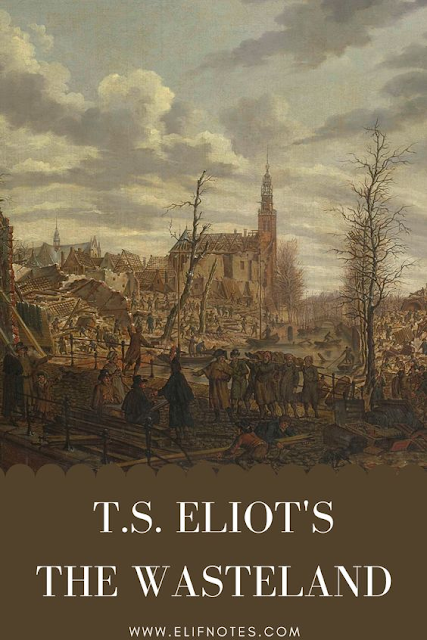Никола Бенин
"The Waste Land" by T.S. Eliot is a complex and influential modernist poem published in 1922. It's known for its fragmented structure, multiple voices, and references to a wide range of literary, cultural, and mythological sources. Here's a summary and critical analysis:
Summary:
"The Waste Land" is divided into five sections: "The Burial of the Dead," "A Game of Chess," "The Fire Sermon," "Death by Water," and "What the Thunder Said."
1. "The Burial of the Dead": This section sets the tone with images of a desolate, post-World War I world. The speaker reflects on a barren, decaying landscape, mirroring the emotional and spiritual emptiness of the characters.
2. "A Game of Chess": This part presents a troubled romantic encounter between a man and a woman, drawing parallels to the myth of Tiresias, a figure who experienced both genders. It explores themes of desire, impotence, and disillusionment.
3. "The Fire Sermon": This section delves into themes of lust, desire, and spiritual decay. It references various religious and mythological texts, highlighting humanity's inability to find spiritual fulfillment in a world dominated by materialism.
4. "Death by Water": Here, the poem shifts to a maritime theme, depicting a drowned sailor and contrasting water's cleansing and destructive qualities. It reflects on the transience of life and the inevitability of death.
5. "What the Thunder Said": The final section combines different mythologies and religions to suggest the possibility of redemption and renewal through suffering. The poem ends with a vision of rain and the possibility of rebirth.
Critical Analysis:
1. Fragmentation: "The Waste Land" is known for its fragmented structure, which mirrors the fractured state of modern society. The discontinuous narrative reflects the disintegration of traditional values and beliefs.
2. Myth and Allusion: Eliot incorporates a vast array of literary and mythological references, from The Bible to The Buddha, from Shakespeare to Greek mythology. These allusions add depth and complexity to the poem, inviting readers to interpret and connect the dots.
3. Alienation and Despair: The poem captures the sense of alienation, disillusionment, and despair prevalent in the aftermath of World War I. It portrays a world in crisis, where traditional values have collapsed, leaving individuals spiritually adrift.
4. Redemption and Hope: While "The Waste Land" is often seen as a bleak portrayal of modernity, it also suggests the possibility of redemption and renewal through suffering and self-awareness. The final section hints at the potential for spiritual rebirth.
5. Multiple Voices: The poem employs a range of voices, including the speaker's, historical figures, and literary characters. This multiplicity reflects the fractured nature of modern identity and consciousness.
In conclusion, "The Waste Land" by T.S. Eliot is a complex and multi-layered poem that explores the disillusionment and spiritual crisis of the modern age. It uses fragmentation, myth, and allusion to convey a sense of fragmentation and despair, while also offering glimpses of hope and redemption. It remains a cornerstone of modernist literature and continues to be a subject of extensive literary analysis and interpretation.

Няма коментари:
Публикуване на коментар